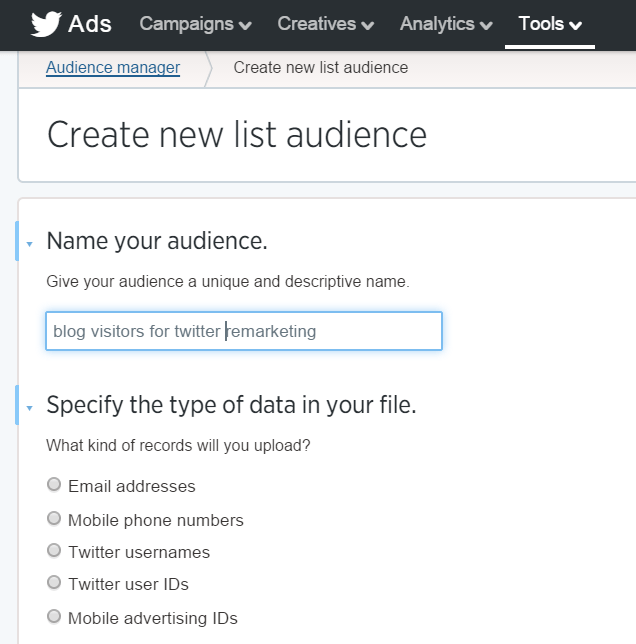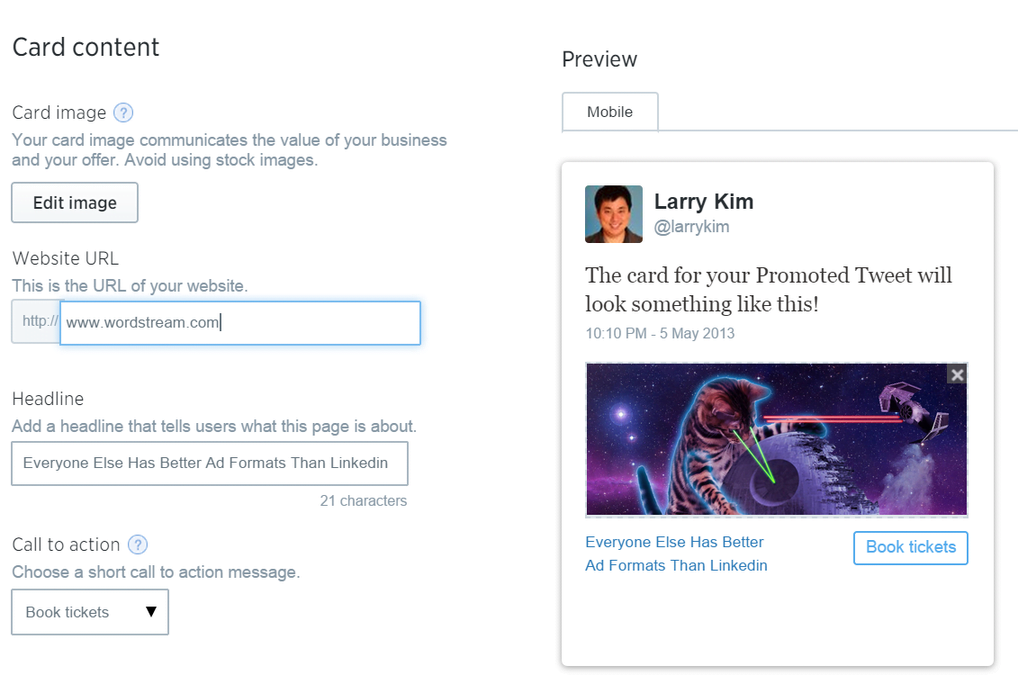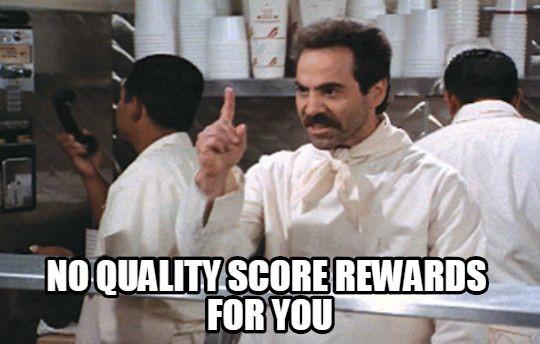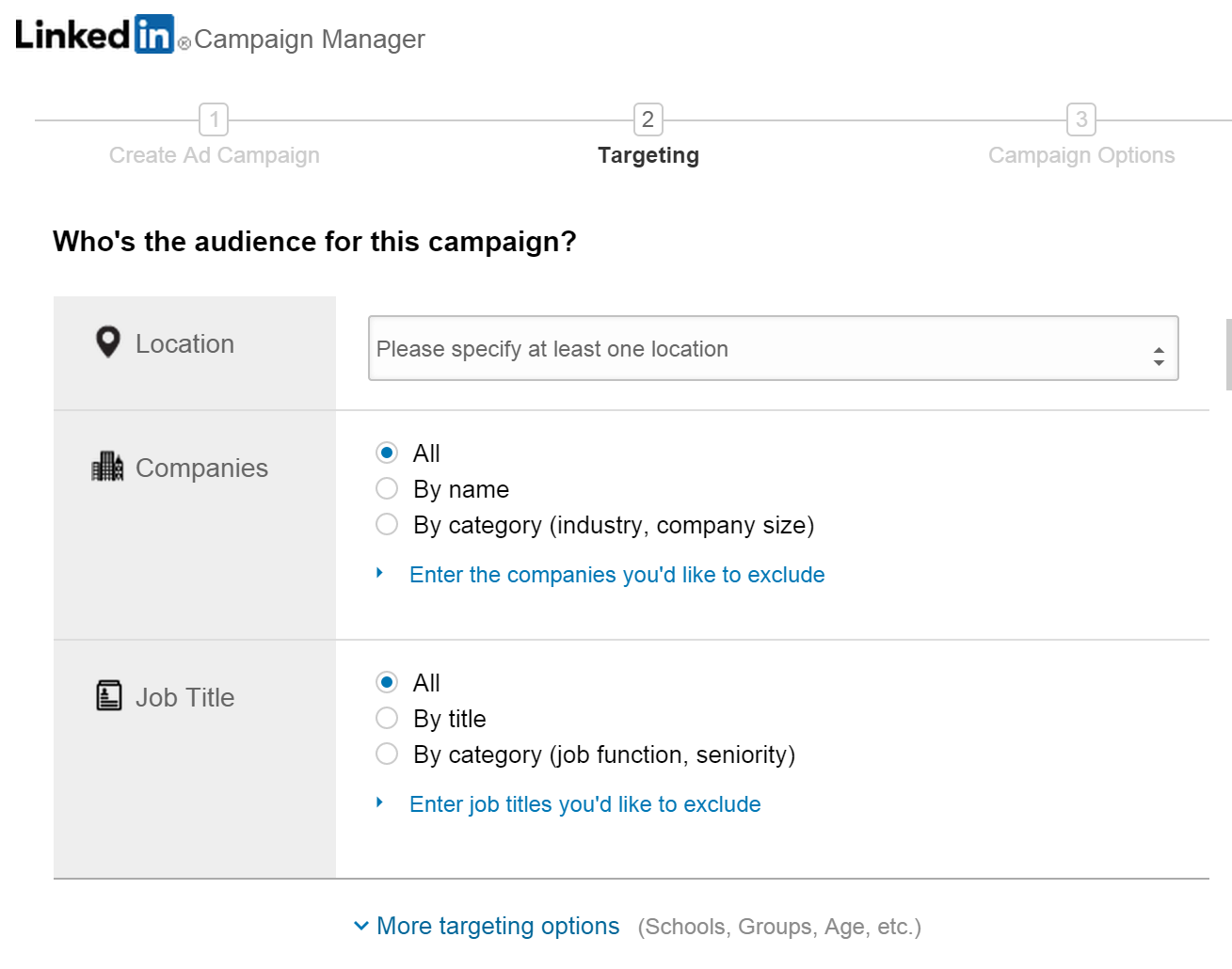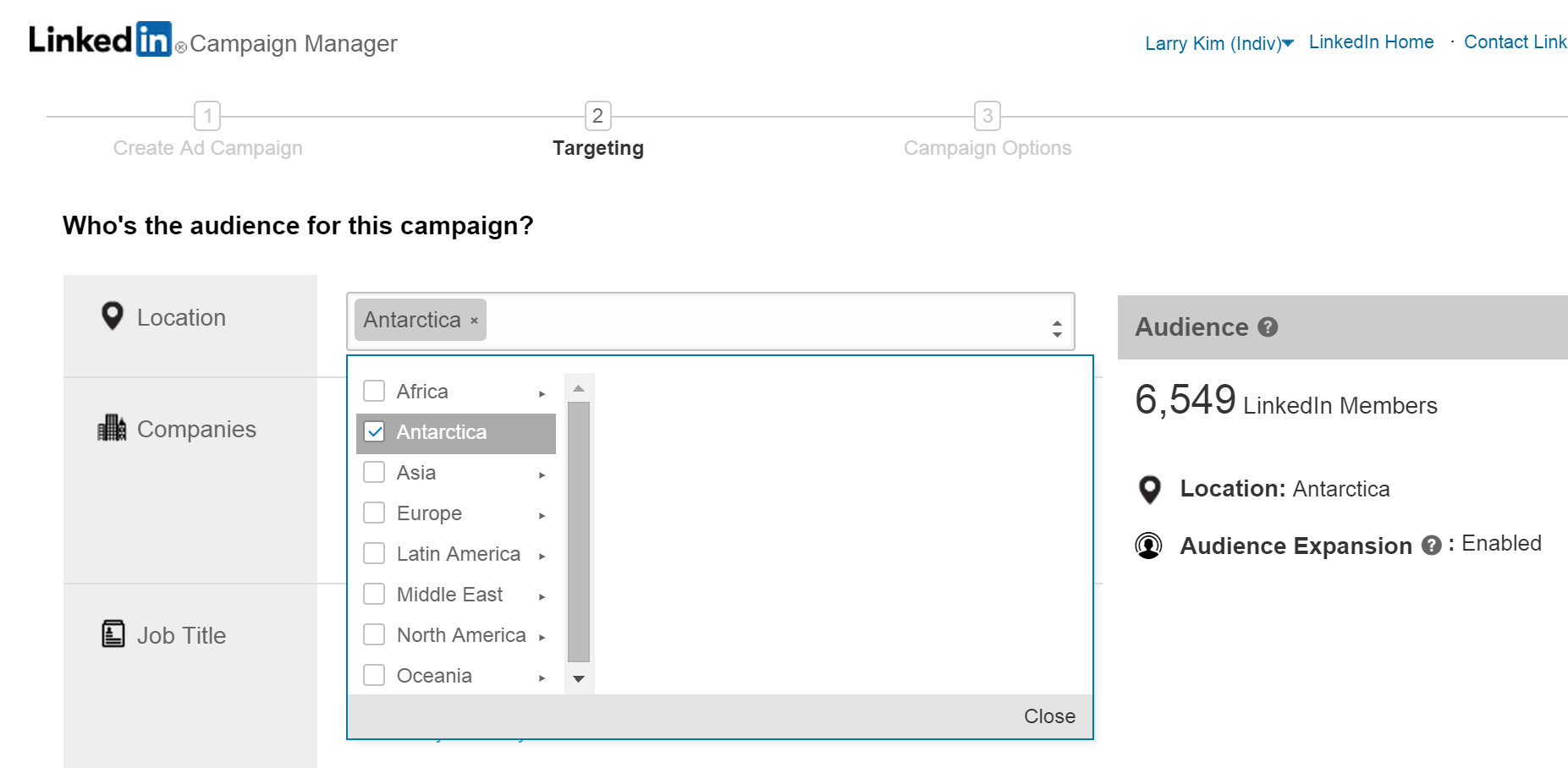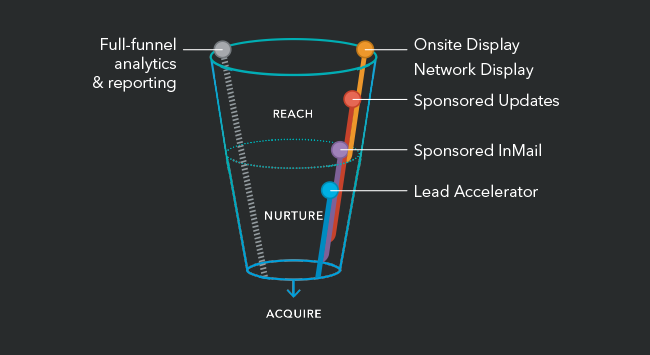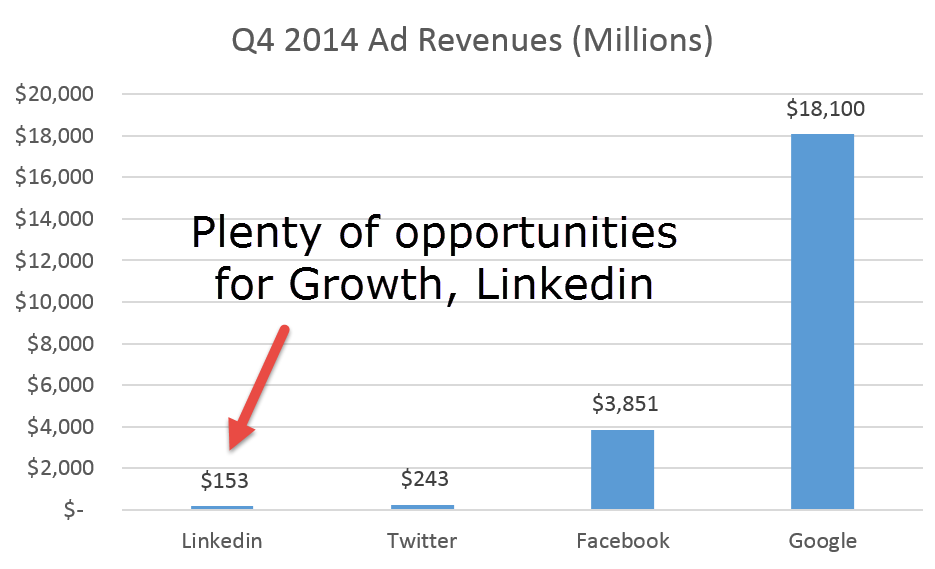
Do Linkedin Ads even work?
LinkedIn made a measly $153 million dollars from ads in the last quarter, with their marketing solutions making up just 20% of their 2014 revenue. That’s insanely low, considering they have over 347 million members now, 93 million of whom are active each month. By contrast, Google did around $18 billion, and Facebook did nearly $4 billion in ad sales during the same time period.
Why is LinkedIn falling down so badly in ad revenue? Simple: their ads kind of stink.
I’ve tried to make them work for dozens of clients, but finally had to give up. Learn why in this LinkedIn Ads review.
8. There’s No Remarketing!
This is pretty nuts. Remarketing was introduced in AdWords over five years ago, but even then, it wasn’t a brand new thing. You can buy remarketing ads on Twitter, Facebook, on the Google Display Network, at YouTube, and even for Google Search – but you can’t get it on LinkedIn.
There are a dozen different flavors of remarketing, too: dynamic remarketing, similar audiences, RLSA, etc.
Advertising on LinkedIn is like traveling back in time, to the good old days. You know, before consumer tracking and electricity.
Remarketing is pretty important; people who have already visited your site are most likely to engage with your ads. You can also tailor your ad creative to appeal to different segments, based on their interactions with your brand.
But you can’t do that on LinkedIn! They have no commercial intent whatsoever. How are you supposed to figure out what these audience segments are in market for? You’re not.
7. No Custom Lists… Seriously.
You can target specific lists of people in Facebook using Custom audiences, or on Twitter using Tailored Audiences. This allows you to take your customer emails right out of your CRM, for example, and dump it into Twitter to target people who already know your brand with specific content.
Not so in LinkedIn. This is where LinkedIn could actually be competing against itself – maybe they’re worried that this would dramatically reduce the value of their Sponsored InMail service? I’m not sure, but it makes for a pretty disappointing PPC ad experience.
6. What Lead Gen Ad Formats?
This is one area where LinkedIn is actually going backwards. They had a Lead Collection feature, but retired it in 2014. The best option, they say, is to capture leads on your own landing page.
Yet with Twitter Cards, you can capture information like email, first name, and last name with one click:
LinkedIn ads come in two flavors: vanilla and plain vanilla (also known as URL ads linking to your site and sponsored updates).
That is, unless you want to use the Premium Display Advertising managed service. But why would you risk it, when this is what the self-serve ads are like?
5. CPM Pricing vs. Goal-Based Pricing
One thing I love about Twitter Ads is the Goal-Based Pricing, which all of their self-serve ad formats have. You get charged for goal completion, depending on the type of campaign you are running.
It tells me they believe in their product and are going to try their best to deliver value, or else they don’t get paid.
If LinkedIn doesn’t believe in their ad products, why should an advertiser?
4. Quality, Schmality.
My name is Larry Kim, and I’m addicted to Quality Score.
In Twitter, Google, Google Display Ads – and even Facebook now – there’s a Quality Score concept that guides your placement, display frequency and pricing. Generally, the higher your CTRs or Engagement Rates, the higher your impression share and the lower your CPC. I love this because it gives advertisers an incentive to create great ads.
Apparently LinkedIn Ads does use a Quality Score metric, but the rewards for great ads are so small, it’s very difficult to detect. It also considers only two things: all-time CTR and your bid.
One thing this does is makes a low-CTR strategy viable on LinkedIn, where it usually isn’t on other ad platforms. Where Quality Score is a major factor (like on Google AdWords), you want to avoid a low CTR because of the negative effect it has on your ad placement and cost per click.
LinkedIn doesn’t seem to give a crap about ad quality and certainly doesn’t reward advertisers for making an effort.
3. Account Promotion Is Ancient and Sucks
LinkedIn Ads will let you promote your Company Page or even your personal account, but it doesn’t give the viewer an option to Follow! On Twitter and Facebook, you can promote your Page or Account and when people see the ad, one click makes them a fan or follower.
No so with LinkedIn.
It’s ridiculously hard to grow your follower base on LinkedIn. You can’t invite people to the Page and you can’t advertise to them in any way that makes sense, either. Company Pages are really limited, too – you can’t respond to the status updates of others, or engage unless your followers initiate the conversation. You can’t post LinkedIn Blog Posts as a company (a feature on personal profiles). You’re really limited, compared to the function of personal LinkedIn profiles.
If you use these ads to promote your Company Page, you have to just cross your fingers and hope that once they click through to your Page, they choose to follow it.
LinkedIn even recommends using the other ad format, Sponsored Updates, to “promote your company page,” but you’ll run into the same issue:
There’s no option for them to Like your Page. You’re paying to get in front of them once and then… praying? If they do what you want and click on the content, they’re gone.
Since the whole point of LinkedIn company pages was to connect companies with people, wouldn’t you think they would make this a little easier? It’s like trying to do social media with both arms tied behind your back. It shouldn’t be this hard.
2. Improvements? We’ll Get Around To It. Or Not.
It’s a full-time job keeping up with all the updates to ad targeting, ad formats, and reporting tools in Twitter, Google AdWords, and Facebook. Yet the Linkedin Ad platform hasn’t changed much since I first started using it, around three years ago.
If the ad targeting options (all still based on targeting user-entered data from personal profile pages) have evolved over the years, it’s imperceptible – and it’s nothing you can’t get on Facebook. It’s pretty crazy, actually… LinkedIn has this smaller but super professional audience, which could be very lucrative for advertisers. They should be offering even more than Facebook to win our ad spend away from them.
Which brings us to…
1. Ridiculously High CPMs
So just how much will these plain vanilla ads with no remarketing, lacking in commercial intent and offering 2005’s targeting options run you?
The minimum bid here is $2.50 a click, or $12.00 per 1000 impressions. The minimum daily budget is $10.00, which will get you exactly 4 clicks or 800 impressions – IF you totally luck out and get the minimum cost possible.
Like I said, it’s not goal-based, so it doesn’t matter to LinkedIn if it actually works for you. You don’t get a click discount for having super effective ads.
I’ve even experimented with drastically changing the targeting parameters, yet price was barely affected. On pretty much every other ad auction I’ve used, there’s this crazy little thing called “supply and demand” that helps guide the price of your ads.
0. Bonus, Most Annoying LinkedIn Missing Feature: No Conversion Tracking!
That’s right. Twitter, Facebook, Google – they all have conversion tracking and rich reporting and analytics dashboards to help you track ROI of your PPC spend. Whereas LinkedIn doesn’t have a conversion pixel.
The suggested work-around is to manually tag your destination URLs and use Google Analytics. The down-side to this approach is that your conversion data doesn’t appear alongside your campaign data.
Is There Anything Good About LinkedIn Ads?
Sure, it has some redeeming qualities. Like… you can target 6,549 people living in Antarctica!
Pretty much everything else is rather unremarkable, in the sense that you can do this elsewhere, better and cheaper.
LinkedIn even fails to make recommendations for using its ads to increase engagement. At the end of every month, I receive an email update telling me how my profile performed for the month. At the bottom of these reports, there’s a section that says “Up your numbers.” This links to a “Best Practices” page that offers tips on how to write compelling headlines and updates, and make the most of Company Page features. But there isn’t a single mention of how to leverage LinkedIn’s advertising options. You’d think that since the purpose of ads is typically to “up your numbers” that there would be a mention of how to do this with LinkedIn ads, but it seems LinkedIn isn’t even confident enough in its advertising offerings to make them a part of these recommendations.
What About LinkedIn’s New Lead Accelerator?
Last week, LinkedIn announced the launch of its “Lead Accelerator” product. Although I haven’t used the service personally yet, at first glance, it looks pretty disappointing. Yes, LinkedIn’s Lead Accelerator could help solve some of these issues, particularly remarketing and conversion tracking. However, as it stands, it appears to offer little more than a way to put LinkedIn ads on other sites, with an analytics layer thrown in.
Personally, I’d be very hesitant about spending even more money on the LinkedIn Lead Accelerator product. If they can’t (or won’t) fix the major problems with their ads on their own site, what makes the idea of placing them elsewhere appealing? Broadening your reach sounds fine in principle, but expanding the range of sites that LinkedIn ads appear on doesn’t do anything to address the serious shortcomings I listed above. If you’re not happy with LinkedIn ads, offering an opportunity to spend even more money to show them on other sites doesn’t sound like a great idea. Like I said, I haven’t tried it yet, but it doesn’t seem particularly compelling. Maybe Lead Accelerator will help LinkedIn ads get with the times, but for now, I’m not convinced.
LinkedIn Ads people, we need to talk. It’s time for you to call a friend here and get some help with the answer. Self-serve ads could be a hugely valuable part of your business – look what it’s done for your friends at Twitter, Facebook and Google. Call me or something… you’re missing out on a huge opportunity, but your users and advertisers just deserve better!


